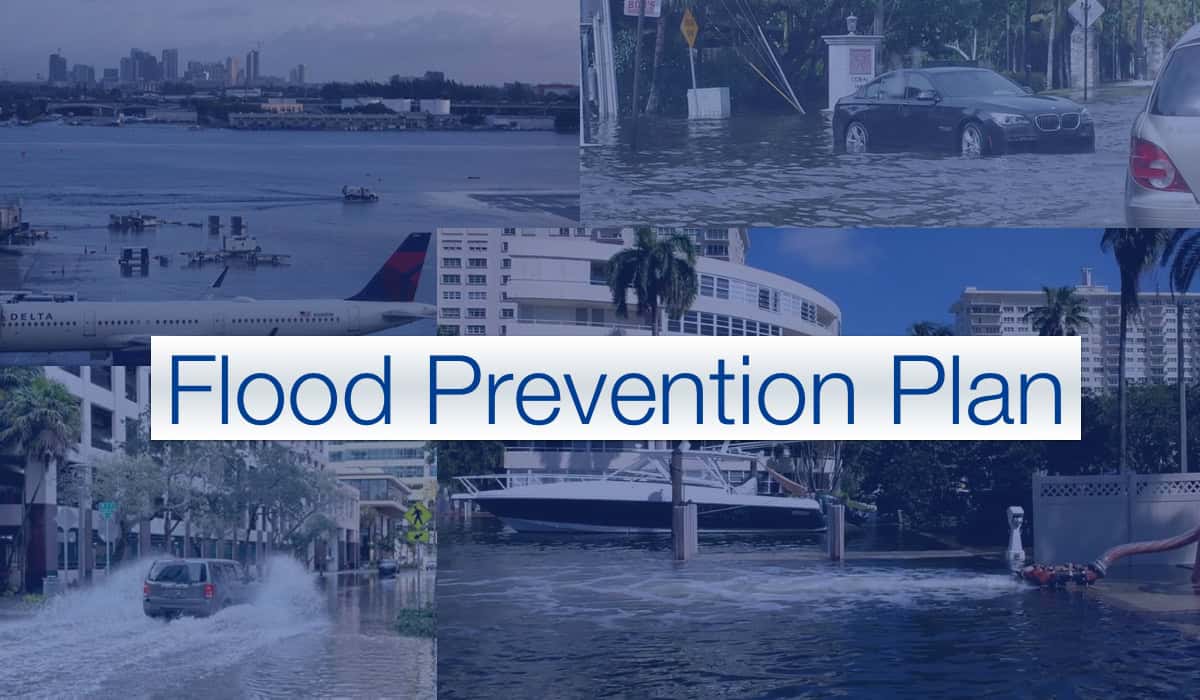With its 300 miles of coastal waterways, flat landscape and subtropical climate, Fort Lauderdale faces the dual challenges of sea-level rise and increasing instances of flooding due to heavy rainfall. In response to these pressing concerns, the city has embarked on a comprehensive plan to address flooding, employing a combination of infrastructure upgrades, innovative technologies, and community engagement initiatives.

Alan Dodd, director of Public Works for the City of Fort Lauderdale, underscores the city’s commitment to tackling flooding: “Flooding poses a significant threat to our community, and we are taking proactive measures to enhance our resilience and protect our residents.” This sentiment echoes throughout the city’s approach to flood mitigation.
Flood Mitigation Efforts
1. Infrastructure Reinforcement: Fort Lauderdale recognizes the critical role of robust infrastructure in managing floodwaters effectively. The city is investing in upgrades to its stormwater management systems, including the installation of advanced pumps, expansion of drainage networks, and fortification of seawalls. These infrastructure enhancements are essential for reducing flood risks and safeguarding vulnerable areas.
2. Green Infrastructure Integration: In addition to traditional infrastructure upgrades, Fort Lauderdale is championing the implementation of green infrastructure solutions. Through the creation of rain gardens, permeable pavements, and bioswales, the city aims to absorb rainwater, reduce surface runoff, and replenish groundwater reserves. Green infrastructure not only aids in flood control but also promotes environmental sustainability and enhances urban aesthetics.
3. Cutting-Edge Technologies: Leveraging technological advancements, Fort Lauderdale is deploying innovative tools to monitor and manage flood events in real time. Remote sensing, predictive modeling, and data analytics play pivotal roles in early warning systems, allowing authorities to respond swiftly and efficiently to flood threats. These technologies empower the city to make data-driven decisions and optimize flood mitigation strategies.
4. Community Engagement and Education: Fort Lauderdale recognizes the importance of engaging the community in flood resilience efforts. The city organizes outreach programs, educational workshops, and awareness campaigns to inform residents about flood risks, preparedness measures, and sustainable practices. By fostering a sense of shared responsibility, Fort Lauderdale encourages individuals and businesses to contribute actively to flood mitigation and resilience building.
A Collaborative Approach
Mayor Emily Smith emphasizes the collaborative nature of Fort Lauderdale’s flood mitigation endeavors: “Addressing flooding requires a collective effort involving government agencies, stakeholders, and residents. Fort Lauderdale is committed to fostering partnerships and working together towards effective solutions.”
The city’s proactive stance on flood mitigation has garnered praise from experts and residents alike. Environmental organizations commend Fort Lauderdale’s holistic approach, combining traditional infrastructure investments with nature-based solutions and community engagement strategies.
Looking ahead, Fort Lauderdale remains steadfast in its commitment to mitigating flooding and enhancing resilience. Ongoing initiatives, strategic partnerships, and continuous monitoring and adaptation are key pillars of the city’s approach. As Alan Dodd aptly summarizes, “Fort Lauderdale is not merely reacting to flooding; we are proactively shaping a resilient future for our city.”
Through a blend of infrastructure resilience, technological innovation, and community empowerment, Fort Lauderdale charts a course towards a more flood-resilient and sustainable urban landscape, setting a model for coastal cities grappling with climate-related challenges worldwide.



